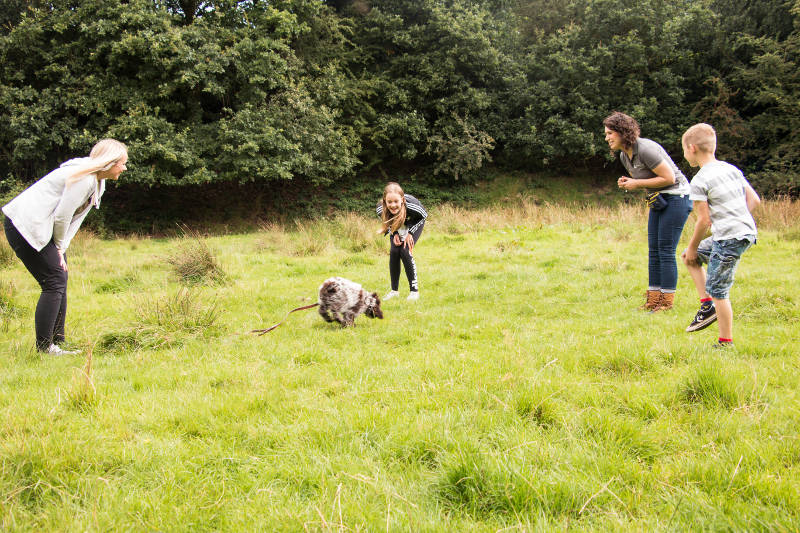Socialisation is one of the most important parts of raising a well-behaved, happy and balanced dog. It involves introducing your dog to as many different experiences as possible throughout his or her life, and the earlier you can do this, the better. In an ideal world you are aiming to introduce your dog to everything it may ever encounter, so it can be quite a daunting task for dog owners!
1. PEOPLE
The more people your dog can meet the better. A wide range of ages, shapes and sizes is best, as well as a range of types of clothing. Let visitors to your house and the postman make a fuss of your dog and reward calm behaviour with treats.
2. ANIMALS
Introduce your dog to other animals like cats, horses, cows and sheep. Make sure you have control over your dog whilst doing this, particularly with livestock. Remember it is an offence to let your dog chase or worry livestock. Let your dog meet as many different breeds of dogs as possible, as often as possible. Make sure your dog meets dogs you know that are sociable and friendly. Always introduce new dogs to each other on neutral territory.
3. TRAFFIC AND TRAVEL
Car sickness is a big problem particularly with younger dogs. Make sure trips in the car often lead to pleasurable experiences like walks and trips to the park. Taking your dog on walks to the shops and to visit friends, through countryside and busy town streets will all help build up his or her confidence. If you are going to be using public transport such as buses or trains start with very short journeys.
4. HANDLING
Even if your dog isn’t a breed which needs a lot of grooming, he or she should be accustomed to being handled regularly. All dogs should be brushed regularly, even if its only every week. Regularly check your dog’s eyes, ears, mouth, teeth and paws to avoid ticklishness.
5. HOUSEHOLD APPLIANCES
Lots of dogs are afraid of noisy household objects such as hoovers and hairdryers. Introduce them slowly and positively, starting off with very short exposure sessions.
6. ALONE TIME
All dogs should be used to being left alone. Build this up slowly over short periods of time, up to a maximum of 4 hours. If you are worried about them chewing try an indoor kennel. Leave toys, chews, water, and a snack such as a kong, so that being left alone is actually quite fun!

